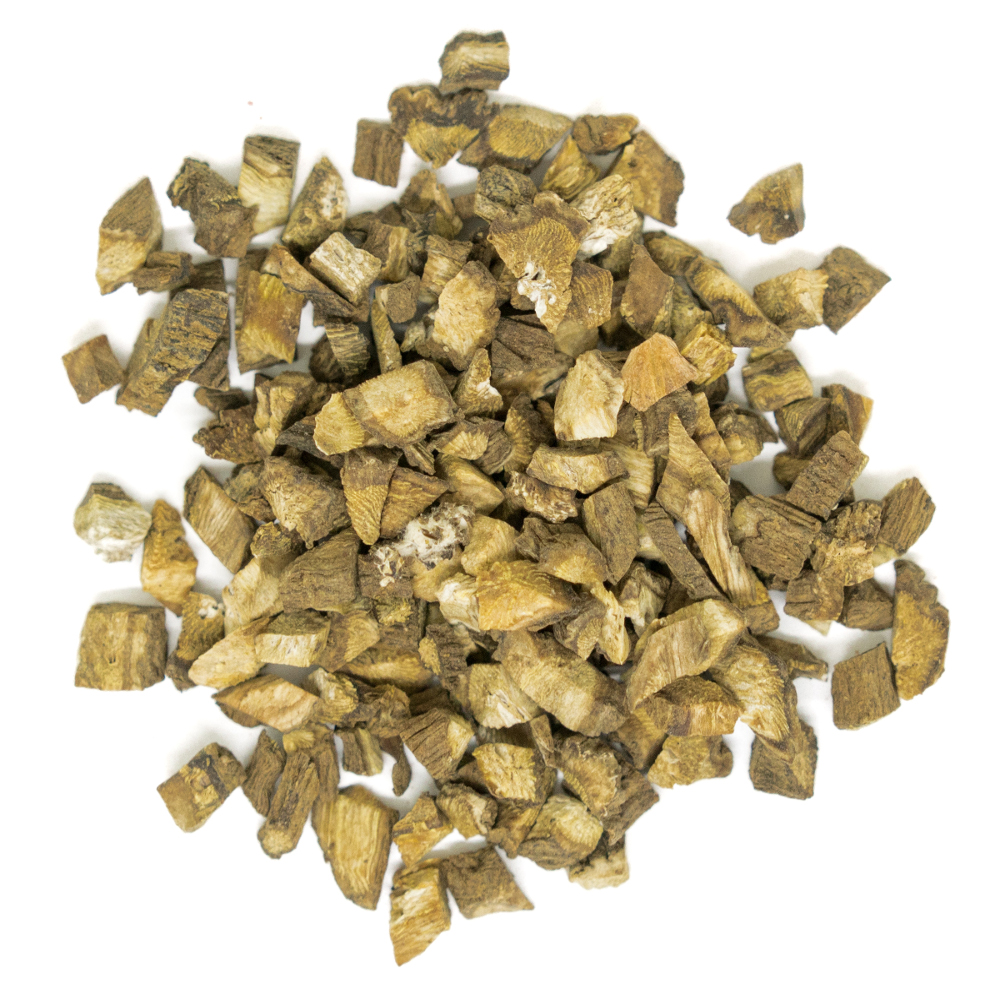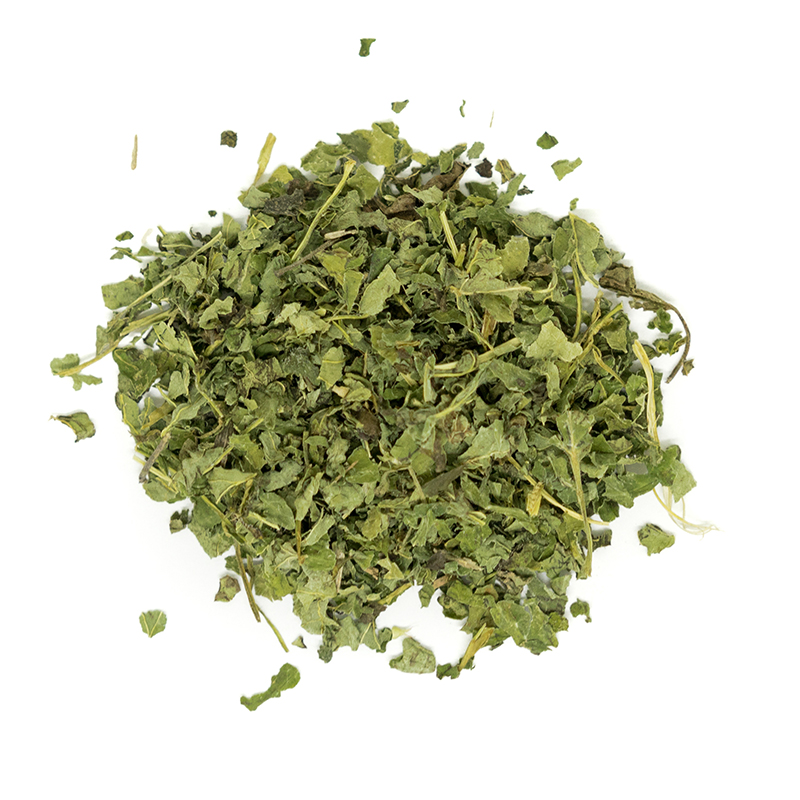We love being able to play around with new recipes for our herbs. It can be intimidating to find the perfect use for a new ingredient. This year has given us some extra free time to experiment in our kitchens, so we decided to share a few of our favourite herbs to give you some inspiration.
BURDOCK ROOT
If you’ve ever finished a hike with small burrs attached to your shoes and ankles, you can assume that burdock is the culprit.
Burdock is a large weed that can grow over 4 feet tall, but its root is the real prize. Burdock root is a stout, course tube like vegetable that contains the starch inulin. Inulin is a type of dietary fibre that can be digested easily by the body
Burdock root, called “Gobo Root” in Japanese cooking, tastes like a cross between a potato and a celery. This versatile vegetable can be prepared in many ways from pickling, steaming to stir-frying. This is why it is so popular amongst Northern Asian cuisine.
Originating in North Asia and Europe, burdock can now be found growing in many parts of North America. In traditional Chinese medicine, burdock is hailed for its skin cleaning and smoothing properties. It is also commonly found in hair and beauty products.
Dried burdock can be used in many preparations, try using it to make a tea, tincture or a facial toner.
Burdock Root Facial Toner
– 6 g Dried Cut Burdock Root
– 1 g Whole Chamomile Flowers
– 225 ml water
Instructions:
1. Combine dried herbs and water in a pot. Place over medium heat.
2. Allow mixture to come to a boil. Turn off heat and steep mixture for 30 minutes
3. Strain mixture and allow to cool.
4. Once the mixture is cooled, apply to the face with a cotton pad. Store mixture in the fridge for a cooling effect. Use within one month.
HORSETAIL
Horsetail has been around for millions of years and is considered as a living fossil! Grown in damp and marshy ground areas, you may find this plant around your favourite lake or pond. The herbs long green and brown hollow stems can grow up to 2 feet tall and are studded with needle-like leaves resembling a horse’s tail – hence the name!
Physicians in ancient Rome and Greece would often use horsetail as an herbal remedy to heal wounds and burns. Due to its high silica content, villagers would also use the mature tips as an abrasive to scrub their pots and pans. Proving that this plant was a household all-rounder!
In modern times, the raw tips of a young plant can be harvested, cooked and eaten similarly to asparagus! Harvesting the horsetail plant is best done in the summertime when the plants are vibrant and green. Stems are picked and air dried in a cool and dark place before they are ground or cut.
Try incorporating dried horsetail into your beauty routine by making this hair rinse:
Horsetail Hair Rinse
8 g Cut Horsetail
4 g Whole Lavender Flowers
454 ml Raw Apple Cider Vinegar
Instructions:
1. Combine dried herbs and apple cider vinegar in a sealed container. Shake mixture and allow to sit for 2-4 weeks.
2. Strain herbs out of vinegar and store in a bottle or jar.
3. Add 15 ml of the finished vinegar mixture to 2 cups of cool water to rinse hair.
LEMON BALM
Lemon Balm, a close relative of the mint family, blooms throughout the summer and fall months. When the heart shaped leaves are bruised, it releases its oils that produce a fragrant lemony scent. The sweet citrus scent means that planting lemon balm in your garden may attract hummingbirds and honey bees!
History has proven that this herb to be very popular in ancient times. Early Arabs believed that lemon balm was beneficial for heart disorders and to dispel melancholy. While physicians in Greece and Rome prescribed lemon balm to treat Scorpian stings and dog bites. This was done by steeping the leaves in wine and using it as a compress.
Today we can find this refreshing herb as an ingredient in many cosmetic and aromatherapy products. The pleasant aroma makes it amazing to use in many home recipes. This includes hot and cold teas, vinegar, syrup and cleaning solutions.
Try this recipe for a soothing tonic. We love the recipes in Blotto Botany by Spencre L.R. McGowan
Lemon Balm Tonic
10 g Lemon Balm Leaf
10 g Rose Petals
2 g Whole Chamomile Flowers
5 g Holy Basil
475 ml Sweet White Wine
Instructions:
Place dry ingredients in a pint-size jar and cover with your preferred wine. Cover tightly and infuse for 2-3 weeks. Make sure to shake daily! Store up to 1 month in the fridge.
CLEAVERS HERB
Cleavers herb is affectionately nicknamed sticky willy, grip grass and catchweed. Is a plant that grows in dense mats near loamy, nitrogen-rich meadows, forests and seashores. The plant has earned its nicknames from the sticky hairs along their stem that manage to catch onto whatever passes them by.
Shepherds would tightly weave these sticky stems to make a sieve used to strain milk. This practice is still alive today in some areas of Sweden!
While using cleavers to fashion a sieve may not be common practise in modern times. It can still be used for cold infusions, smoothies, oats and salad dressings.
Try our recipe for cleavers massage oil for a topical stimulant.
Cleavers Massage Oil
6 g Cleavers Herb
3 g Rose Petals
Sweet Almond Oil to cover herbs
Instructions:
1. Place dried cleavers herb and rose petals in a jar
2. Pour enough Sweet Almond Oil just to cover herbs
3. Seal jar well, store away from sunlight
4. Allow herbs to infuse for 14 days. Shake jar every few days.

